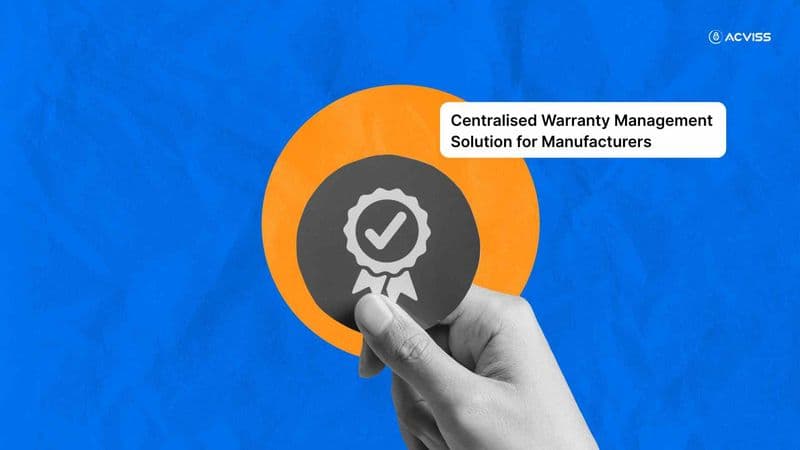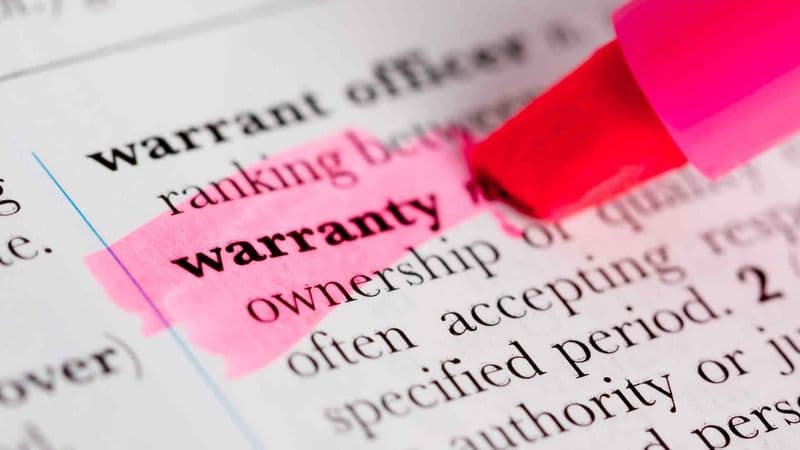How Centralised Warranty Management Boosts ROI and Protects Manufacturer Brand Value

When manufacturers think of warranties, they often see them as a necessary cost: a promise to the customer, a legal contingency, and a service contract. What they sometimes don’t see is how a centralised warranty management solution can turn that cost centre into a strategic asset, delivering measurable returns, reinforcing brand trust and protection, and even becoming a bulwark against fraud, counterfeiting and supply-chain drift.
In this deep dive, we explore the ROI, the business levers and the broader implications for brand health and product integrity. We’ll examine how warranty management intersects with warranty fraud prevention, brand protection, offline protection, product verification, and how injecting a smart technology layer, alongside non-cloneable technology, can raise the game. The intent: to give manufacturing leadership a clear lens into how they can translate warranty strategy into value.
The Warranty Landscape: Why It Matters
Manufacturers typically allocate around 1.5 % to 2 % of product sales revenue to warranty costs. Within that figure lies another troubling statistic: studies estimate that 3 % to 5 % of total warranty expenditures or even up to 10 % of claims may be fraudulent. That is essentially profit leakage masked as legitimate service.
Beyond direct costs, ineffective warranty management undermines brand reputation, slows down customer complaint resolution, and weakens the ability to recover costs from suppliers or channel partners. As one manufacturing advisor noted: “Warranty fraud is revenue leakage in disguise, costing manufacturers up to $25 billion a year.”
From the brand-protection vantage point, warranty solutions aren’t just about cost control. They are about ensuring product verification, enabling brand authentication, safeguarding offline protection (i.e., distribution channels beyond online) and reinforcing customer satisfaction through reliable service. When the promise you make to a buyer, that your product works and will be supported, comes true, your brand reputation is built. The reverse is equally true.
What a Centralised Warranty Management Solution Looks Like
Let’s break down the components of a modern, centralised warranty management solution and map how each one builds value.
1. Unified Claim Platform
Rather than disparate spreadsheets, dealer-submitted paper forms or siloed systems, a unified platform aggregates claims data, tracks status and correlates with product identifiers. That enables better transparency, faster handling and fewer errors. Research shows that warranty management software can cut claim-cycle time by ~18 % and reduce shipping/processing costs by up to 20 %.
2. Integrated Product Verification & Authentication Layer
Here’s where the brand-protection and anti-counterfeiting overlap. Embedding product verification (for example, via non-cloneable tags or unique identifiers) means that when a warranty claim is submitted, the system can instantly check: Was this genuine? Was it authorised? Is it registered? This guards against fraud, reduces the cost of servicing unauthorised or counterfeit items, and protects the brand’s promise.
3. Analytics & Fraud Detection
By centralising data, you can analyse patterns: which dealers are submitting above-normal claims, which parts are failing early and across multiple units, and where return-to-supplier recovery is lagging. These insights allow you to plug leakages. A study notes that by using AI/ML and centralised data, failure rates can be reduced by ~23 % in 18 months.
4. Supplier and Channel Recovery Mechanism
Centralised systems make it much easier to trace back warranty costs to the relevant suppliers or channel partners who are responsible for defects (or non-genuine parts). That means recovering costs, applying pressure on suppliers for quality, and reinforcing brand protection.
5. Customer Engagement & Service Efficiency
Customer perception is strongly influenced by how smooth their experience is when a product fails. A streamlined warranty process gives transparency, faster resolution and therefore higher customer satisfaction. Streamlined warranty management improved customer satisfaction metrics by up to 12 %.
The ROI Equation: Where Manufacturing Wins
Putting the mechanics aside, let’s look at where the value accrues.
1. Cost Avoidance & Fraud Prevention
If up to 10 % of claims are fraudulent, eliminating or reducing that leakage directly improves margins. Suppose a manufacturer spends 2 % of revenue on warranty costs, and their annual revenue is £100 m, that’s £2 m. If 5 % of that is fraud, then £100k is at risk. Eliminating most of that via better verification and detection can free up that amount.
2. Improved Quality, Reduced Failures
Analysing warranty data leads to design feedback, earlier detection of component issues, and improved supplier contracts. A reduction of failure rates by 23 % (in some case studies) means fewer incoming claims, fewer replacements and lower servicing costs.
3. Supplier / Channel Cost Recovery
Centralised data allows you to reclaim warranty spend from responsible suppliers or channels. That turns what was a cost into a partially recovered asset. As one consultancy notes, an effective warranty strategy helps both cost reduction and revenue growth.
4. Differentiated Brand Value & Customer Retention
A streamlined warranty experience strengthens customer loyalty, fosters repeat purchases and supports higher lifetime customer value. Given the role of product verification and brand authentication, you reinforce the perception of quality and trust. Loyalty is harder (and more expensive) to win than to lose.
5. Extended Service as Revenue Stream
Once your warranty system is robust, you can monetise extended warranties or service contracts, a higher margin than the original product. Beyond mere defence of warranty costs, manufacturers can shift into offensive warranty strategies (service, subscription) for additional revenue.
When you aggregate all these levers, the business case becomes compelling: lower cost, less fraud, higher customer satisfaction, stronger brand protection, and new revenue streams.
Why Brand Protection, Offline Protection & Product Verification Matter

A warranty management solution does not operate in isolation; it sits at the intersection of several broader imperatives:
Brand Protection: The guarantee you provide is an extension of your brand promise. When a customer buys your product, they implicitly trust not just the product but the backing. A failure in warranty service breaks that trust. Worse, counterfeit or unauthorised goods entering the warranty flow damages that trust by eroding quality and service consistency.
Offline Protection: Manufacturers often focus on online channels, but many consumer-facing or industrial products still travel through offline networks: dealers, service centres, resellers. You need to ensure those channels are watertight. Centralised warranty management lets you verify that each claim corresponds to a genuine unit, sold through authorised channels, thus stemming leakage via grey/unauthorised channels.
Product Verification & Authentication: Without the ability to verify a product’s authenticity and its warranty status, you invite abuse: service claims on units you did not sell or authorise, parts replacement in counterfeit units, and even a safety risk if unverified units fail. Embedding non-cloneable identifiers, serial number registration, channel registration and linking this to the warranty platform raises the barrier for fraud and strengthens both brand credibility and customer safety.
In this context, a plug-in solution such as Assist by Acviss, paired with non-cloneable technology (for unique unit tracking and authentication), becomes a powerful enabler. It connects the physical product (through secure ID), the distribution channel (through authorised registration) and the warranty management hub (through claims, servicing and analytics). These layers tie together warranty management, product verification, offline channel integrity and brand protection into a coherent ecosystem.
Steps to Implement & Extract ROI
For manufacturers convinced of the value, here’s an implementation roadmap:
Step 1: Audit your current warranty/claims flow
Map how claims are submitted, how parts/service requests are handled, how verification happens (if at all), how supplier recovery works, and how data is captured.
Step 2: Define the scope of centralisation
Decide which parts, units, markets and channels will move into a centralised warranty hub. Prioritise the most at-risk lines (high claim volume, high cost, high counterfeit risk).
Step 3: Embed verification mechanisms
Introduce unique identifiers on each unit (serial number, non-cloneable tag) and ensure channel registration. Link these IDs to a product verification portal (so that when a customer or service centre scans/registers, you can verify authenticity).
Step 4: Deploy a centralised warranty management platform
Select or build a system where all claims data flows in real time, where you can apply analytics for fraud detection, monitor patterns, manage supplier recovery and provide service-team visibility. Ensure it supports mobile/field usage, integrates with ERP/CRM and services channels.
Step 5: Link analytics to improvement
Use warranty data to feed back into design, supplier contracts, service parts sourcing, and channel performance. Identify patterns: high-failure parts, top claimants, unauthorised units, etc.
Step 6: Monitor ROI metrics
Track: reduction in claim time, reduction in fraudulent claims, lowered number of failures (per unit), supplier cost recovery, improvement in customer satisfaction/engagement, incremental revenue from extended warranties/servicing. For example, studies show that centralised systems reduce claim resolution time by nearly half.
Step 7: Expand and iterate
Start with high-value products or high-risk markets, then expand across the portfolio. Keep refining your verification rules, channel enforcement, analytics models and customer engagement mechanisms.
Real-World Considerations & Pitfalls
No solution is plug-and-play. Some caveats to watch:
- Data complexity and legacy systems: Manufacturers often run across multiple legacy IT systems, disparate channels and inconsistent processes. Centralising requires integration effort.
- Training and change management: Service teams, dealers and internal staff must adopt new workflows. Lack of adoption undermines the system.
- Upfront investment vs long-term payoff: The benefits accrue over time. As one research paper concludes, converting traditional warranty management from reactive to proactive may require upfront training, capital and data governance.
- Supplier/partner buy-in: Suppliers may resist stronger recovery mechanisms, and channels may resist increased oversight. Clear communication and incentives help.
- Verification hardware/tech cost: Implementing non-cloneable tags, scanning devices, or authentication systems may raise cost. But these are counterbalanced by fraud prevention, brand protection and safety benefits.
Why It Matters Now More Than Ever

In the globalised supply chains, e-commerce and rapid servicing expectations, manufacturers face increasing pressure: from warranty cost containment, customer service metrics, anti-counterfeiting regimes, to channel integrity. The margin between success and failure is thinner.
- Warranty fraud and false claims are not going away; digital channels and complex ecosystems have increased exposure.
- Customers expect seamless service, timely resolutions, and transparent outcomes, and your warranty promise is a direct reflection of your brand.
- Counterfeit and grey-market goods challenge brand authenticity and product safety. Centralised platforms with product verification help bridge the gap between physical product and brand promise.
- Extended services, bundled warranties and subscription models are growing. A robust warranty backend allows you to support these new business models, enhancing customer engagement and customer satisfaction.
Conclusion
A centralised warranty management solution is not simply a cost-reduction tool. It is a brand protection play, an operational efficiency vehicle, a customer-engagement enhancer, and a fraud prevention firewall. When implemented with verification layers, offline-channel integrity and analytics, it becomes a strategic asset, turning warranty from a cost burden into a value driver.
For manufacturers asking “What’s in it for us?” the answer lies in measurable ROI: fewer false claims, fewer failures, stronger brand perception, higher customer satisfaction and new service-based revenue streams. In short, the promise you make to your customer becomes the promise you keep, and every promise kept enhances the value of your brand.
Interested to learn more about how this works in your industry and how we can help implement a centralised warranty management strategy integrated with product verification and brand protection solutions? Get in touch with us.
